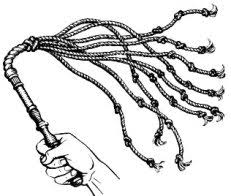
Today’s Reading: Mark 15
The Passion of Christ is familiar to many Christians because it is the essential foundation of our faith and beliefs. In Mark Chapter 15, the apostle explains in such detail of the account from Gethsemane to the Cross. While reading this passage this week, one section continued to speak to me:
15 So Pilate, wishing to satisfy the crowd, released for them Barabbas, and having scourged[a] Jesus, he delivered him to be crucified.
After reading this passage and chapter many times in my life, I have always speed through this part of the Scripture. I wonder if I have been too preoccupied to get to the cross or have I not fully understood the gravity of the entire process of the trial and the crucifixion. Pilate has for the previous14 verses, tried to persuade the Jewish people to release Jesus and not to punish him, but in the end he submits to the crowd and then gives him the full extent of the punishment. In verse 15, the word that is subtle and somewhat obscured is “scourged”. This particular word has so much heaviness that it needs to be examined.
“Flogging was a legal preliminary to every Roman execution, and only women and Roman senators or soldiers (except in cases of desertion) were exempt. The usual instrument was a short whip with several single or braided leather thongs of variable lengths, in which small iron balls or sharp pieces of sheep bones were tied at intervals. For scourging, the man was stripped of his clothing, and his hands were tied to an upright post. The severity of the scourging depended on the disposition of the lictors and was intended to weaken the victim to a state just short of collapse or death. As the Roman soldiers repeatedly struck the victim’s back with full force, the iron balls would cause deep contusions, and the leather thongs and sheep bones would cut into the skin and subcutaneous tissues. Then, as the flogging continued, the lacerations would tear into the underlying skeletal muscles and produce quivering ribbons of bleeding flesh. Pain and blood loss generally set the stage for circulatory shock. The extent of blood loss may well have determined how long the victim would survive on the cross. After the scourging, the soldiers often taunted their victim.”
With this new understanding of the true nature of the punishment that Christ endured allows me to worship him more and have a deeper understanding of his true devotion to us as followers, friends, and family in faith. In this passage three themes are presented: The Strength of a Savior, The Faith of a Savior, and the Love of a Savior.
The Strength of a Savior: The raw strength that Christ had during his last hours astonishes me. After the persecution of the religious council, he is subjected to the scourge that completely disfigures him and damages all aspects of his body. He is just barely living, then he takes his cross( ~ 80-300lbs) to a destination that is far away. The strength of the savior is more than anything imaginable.
The Faith of the Savior: The faith of Christ during this passage is a beacon to us to continue to push to the goal. During this time, Christ was having internal conflict with the human and the divine that is seen in the garden of Gethsemane. But his faith in the Father and the knowledge that all things work for the kingdom allows him to complete his mission.
The Love of the Savior: All of the entire gospel rest on the Love of the Savior that he has committed and executed the plan of salvation for all. Without the love for us and the desire to make us whole, he has been completely broken and shattered to give us another chance of redemption.
The true description of passage allows me to worship this awesome Savior. The strength, faith, and love that he has shown through the cross can never be taken easily or likely. It is a choice that has to be truly embraced. The question that I pose to myself daily is: How can I show my gratitude for the sacrifice that He has given me? Let us ask each other and ourselves this question so that we may live more like Christ.